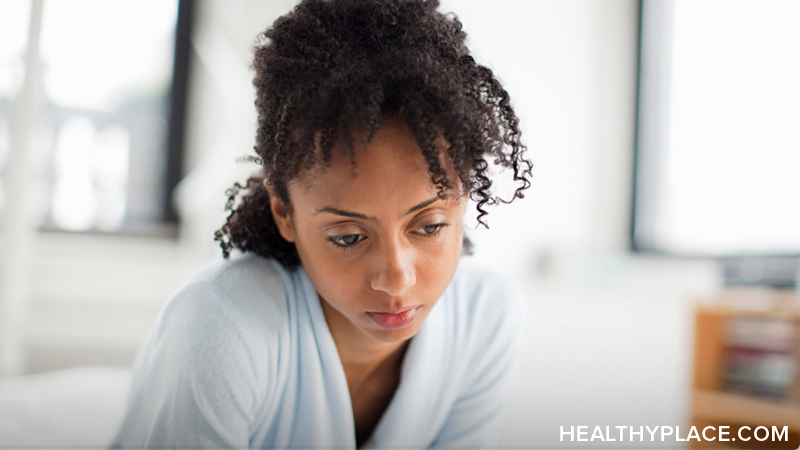How Symptoms of Depression Affect Women

The symptoms of depression in women can severely impact social and occupational functioning as well as impair a woman's ability to care for a child (learn about postpartum depression). Depression is a debilitating illness that one-in-eight women can expect to experience in their lifetime and is characterized by prolonged periods of a low, or depressed, mood. It's important to remember, however, that depression is a very treatable mental illness.
Symptoms of Depression in Women
Female depression symptoms meet the same diagnostic criteria as those for men according to the Diagnostic and Statistical Manual of Mental Illness. However, there is a common cluster of depression symptoms women tend to experience. General symptoms of depression include:
- Depressed or low mood
- Lack of interest in previously enjoyed activities
- Worthlessness, hopelessness, guilt
- Sleep disturbance
- Appetite and weight changes
- Difficulty in memory and decision-making
- Fatigue
- Recurring thoughts of death
While these symptoms are common across genders, women tend to experience some depression symptoms more than others. For example, symptoms of depression in women tend to include more feelings of guilt than men and are more likely to be those known as "atypical" depression symptoms. Atypical depression symptoms in women include:
- Increase in appetite, particularly for carbohydrates
- Weight gain
- Increased need for sleep
A type of depression known as seasonal affect disorder (SAD) is seen in women more often than men. Women experience depressive symptoms according to the time of year (season) in this disorder. Women are also more likely to have thyroid problems and this can contribute to, or mimic, depression symptoms.
Almost twice as many women are diagnosed with depression as men (take online depression quiz). It's unknown as to whether this number reflects a predisposition in women to seek treatment for depression, but it's likely explained, at least in part, by the hormonal changes that happen throughout a woman's life. This increase in a woman's risk of depression is seen across other countries such as Iceland, Canada, Japan and Switzerland.1
Depression Risk Factors in Women
There are many known risk factors in women for developing depression. Many risk factors affect both genders equally such as extreme stress, genetic predisposition or a co-existing illness. Some depression risk factors only apply, or are much more common in, women.
A major depression risk factor for women is childbirth. Postpartum, 85% of women experience emotional upset and 10%-15% go on to experience clinical depression. The drop in hormones, blood volume, blood pressure and other major physical systems puts women at a dramatically increased risk of depression. Having to adapt to, and care for, a new child is also a major life stressor and a risk factor of depression.
Other depression risk factors commonly seen in women include:2
- History of abuse, sexual abuse
- Use of an oral contraceptive, particularly those with a high progesterone content
- Use of gonadotropin stimulants as part of infertility treatment
- Loss of social supports, or the threat of this loss
- Lack of intimacy and marital discord
- Miscarriage or unwanted pregnancy
- Infertility
- Premenstrual problems
- Perimenopause and menopause
APA Reference
Tracy, N.
(2022, January 3). How Symptoms of Depression Affect Women, HealthyPlace. Retrieved
on 2024, April 23 from https://www.healthyplace.com/depression/women/how-symptoms-of-depression-affect-women



